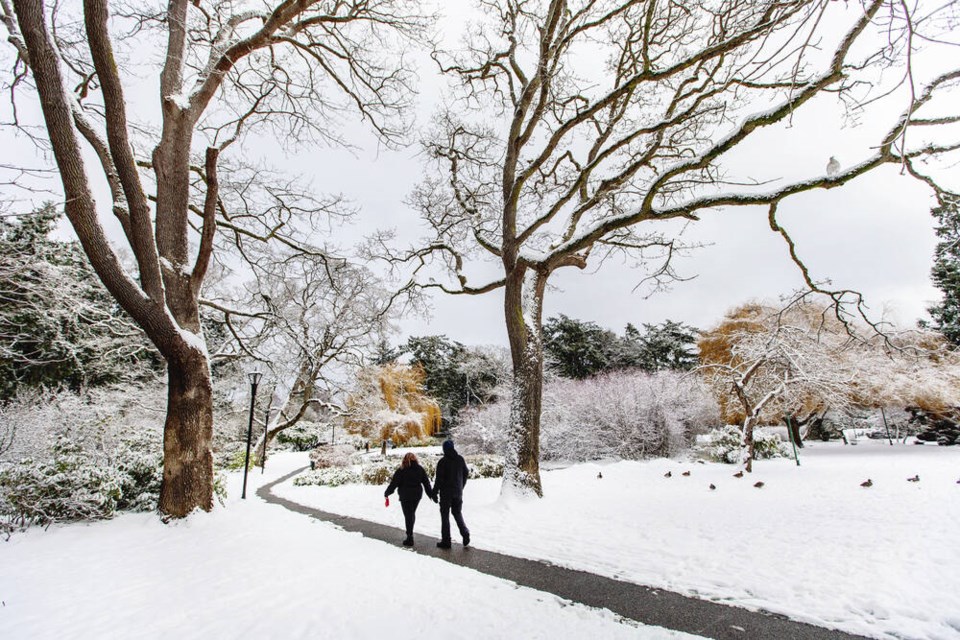If the weather in Greater Victoria over the past six months is any indication, continue to expect the unexpected.
Extreme heat, heavy rain, big winds — and lately, big blankets of snow — have slammed the capital region since June. And on Monday, Mother Nature hit us with a mix of snow, heavy rain and sunshine, keeping us guessing what could possibly come next.
Steven Murray, a Victoria weather analyst who meticulously follows weather data collected at Gonzales Hill in Oak Bay, called it a year of extremes.
The federal Gonzales Observatory station opened in 1914, but data for the area goes back to 1898, when weather patterns were collected at a former station on Cook Street.
This year, the station saw its biggest range of temperature ever recorded in one year — a swing of 49.5 degrees C, said Murray.
It started with the heat dome and Greater Victoria reaching the hottest temperature ever recorded — 39.8 C on June 28, shattering the old record by almost four degrees.
The year ended with the coldest temperature recorded in 36 years: -9.7 C on Dec. 27.
There were also four consecutive days from Dec. 26 to 29 when the temperature did not rise above freezing — the longest stretch in 36 years, said Murray.
It was also the warmest June on record, with a mean temperature of 16.6 C.
And there was plenty of rain as “atmospheric rivers” became part of everyday vernacular with a fire-hose style of rainfall targeting specific areas.
And it included snowfall at the start of 2021 and over Christmas into the new year.
“It was probably the wettest year on record,” said Murray, noting an estimated 953 millimetres of precipitation in the region during 2021.
The old record was 944.6 mm in 1933.
The number isn’t official, however, because the rain gauge at Gonzales stopped functioning during the snowfall in February and again in December, he said. “So the total rainfall recorded by [Environment Canada] was 910.6 mm, which would make it the third wettest year on record.”
Murray said he used data from the nearest Environment Canada weather station, at the University of Victoria, to estimate the missing amounts.
It was also the wettest meteorological fall (Sept. 1 to Nov. 30), with 510 mm of rain. The rainfall during those three months was equal to more than 80% of Greater Victoria’s average annual rainfall, said Murray.
The region this year had two of the 10 all-time wettest days ever recorded — 72.6 mm on Nov. 15 (7th wettest) and 71.4 mm on Oct. 28 (9th wettest).
Rewind to July, and there was not a drop of precipitation that month.
It was only the sixth time since records were kept since the late 1800s that there wasn’t a trace of precipitation during July, said Murray.
A parched July led to the third-longest streak with no measurable rain — 53 days from June 15 to Aug. 6.
The record remains a 63-day dry spell set in 1926, followed by a 54-day stretch in 1986.
Contrary to popular belief, Victoria is the driest city in Canada during the summer months, said Murray, citing the 30-year average for rainfall from June to August.
Victoria receives 54.4 mm on average, far less than Kamloops (92.5 mm), Nanaimo (97.2), Penticton (103.3) and Kelowna (115.2).
Vancouver gets 126 mm, and the B.C. cities are all drier than Calgary (216.5 mm), Edmonton (223.2), Toronto (225.3), Winnipeg (246.5), Montreal (270.4) and Halifax (285.2).



